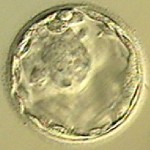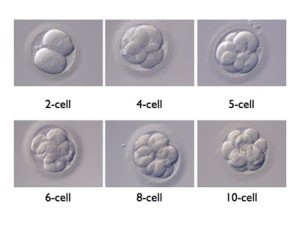Blastocyst Transfer
 A blastocyst is an embryo created through IVF, which has been incubated for several days and allowed to grow until its cells have divided or (cleaved) to a number that is most ideal for a successful transfer – either on day 5 or day 6 of an embryo’s development.
A blastocyst is an embryo created through IVF, which has been incubated for several days and allowed to grow until its cells have divided or (cleaved) to a number that is most ideal for a successful transfer – either on day 5 or day 6 of an embryo’s development.
The difference between a traditional “day 3 embryo transfer,” and a “blastocyst transfer” is that in a typical In Vitro Fertilization procedure, embryos are transferred after 3 days of growth in the laboratory. With a blastocyst transfer, however, embryos are allowed to grow for 5-6 days to the blastocyst stage. Allowing embryos to grow longer in an incubator before transferring provides more time for the embryos to either thrive and develop into a healthier specimen, or diminish and die if it was not genetically strong to begin with. Embryos that survive upto the blastocyst stage of development are usually healthy and strong, and have a higher potential of developing into a viable pregnancy.
In traditional embryo transfers which occur on the 3rd day, it is sometimes difficult to predict which embryos have the highest likelihood of producing a pregnancy. Therefore, depending on the patient’s age and circumstances, up to 5 embryos may typically be transferred to increase the chances of at least 1 embryo successfully achieving a live birth. The downside to transferring multiple embryos is, of course, the increased the chance of multiple gestations (triplets or greater). When day 5 blastocysts are used as opposed to day 3 embryos, there is a higher chance of successful implantation therefore less need to transfer multiple embryos, minimizing the chance of multiple births.
Because blastocysts must remain in the laboratory for a longer period of time, different cultures are necessary to meet the requirements specific to each stage of growth.
